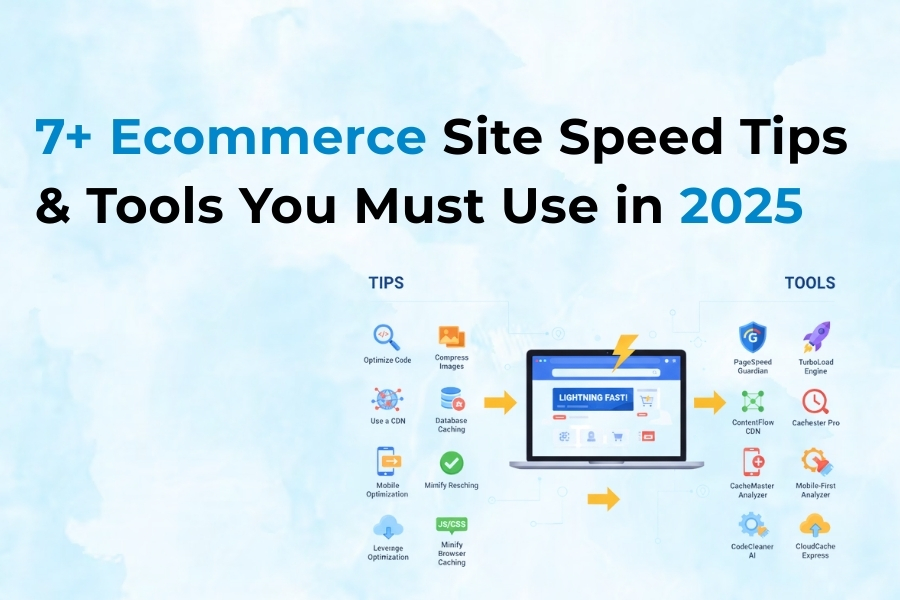In today's digital world, having a strong online presence is crucial for the success of any e-commerce website. One of the most effective ways to improve the visibility and ranking of your website on search engines is through search engine optimization (SEO). Conducting an SEO audit is an essential part of optimizing your e-commerce website for better search engine rankings. In this step-by-step guide, we will walk you through the process of performing a comprehensive e-commerce SEO audit to identify areas for improvement and enhance your website's performance.
Why is an SEO Audit Important?
Before we dive into the step-by-step guide, let's understand the importance of an SEO audit for your e-commerce website. An SEO audit helps you evaluate the current state of your website's SEO and identify any issues or opportunities for improvement. By conducting an audit, you can:
- Identify technical SEO issues on your website, such as broken links, slow page load speed, or crawl ability issues, and fix them for better user experience and search engine rankings.
- Analyze your website's keyword strategy and optimize it to target relevant keywords that align with your business goals.
- Evaluate your website's backlink profile and identify opportunities to earn high-quality backlinks, which can improve your website's credibility and authority.
- Assess your website's on-page SEO factors, such as meta tags, content quality, and internal linking structure, to optimize them for relevancy and user engagement with help of seo company in jaipur.
Step 1: Conduct a Website Crawl
The first step in performing an SEO audit for your e-commerce website is to conduct a website crawl. This involves using a website crawler tool to analyze the various pages and elements of your website. The purpose of a crawl is to identify any technical issues that may be affecting your website's performance or visibility on search engines.
Use a reliable website crawler tool to crawl your entire website. This will help you identify issues such as broken links, duplicate content, missing meta tags, or any other technical SEO issues that need to be addressed.
Step 2: Analyze SEO Metadata
Once you have conducted a website crawl, it's time to analyze your website's SEO metadata. Metadata includes elements such as meta titles, meta descriptions, and header tags. These elements play a crucial role in helping search engines understand the content on your website and rank it accordingly.
Ensure that each page on your e-commerce website has a unique and descriptive meta title and meta description that incorporates relevant keywords. Use header tags (H1, H2, etc.) to structure your content and make it easier for search engines to understand the hierarchy and relevance of your content.
Step 3: Evaluate Keyword Strategy
A strong keyword strategy is essential for improving your website's visibility on search engines. Evaluate your current keyword strategy and identify opportunities to optimize it for better rankings.
Analyze the keywords you are currently targeting and ensure they align with your business goals and target audience. Use keyword research tools to identify relevant keywords with high search volume and low competition keywords. Incorporate these keywords strategically in your website's content, meta tags, and URLs.
Step 4: Assess On-Page Content
Content is king when it comes to SEO. Analyze the quality and relevance of your website's content to improve its search engine visibility.
Ensure that your e-commerce website has unique, informative, and engaging content. Optimize your product details, pages category and product blog posts with relevant keywords. Pay attention to factors like readability, proper formatting, and the use of images and videos to enhance user experience.
Step 5: Examine Backlink Profile
Backlinks play a crucial role in determining your website's authority and credibility in the eyes of search engines. Analyze your backlink profile to identify opportunities for earning high-quality backlinks.
Use backlink analysis tools to identify the domains linking to your website. Assess the quality and relevancy of these backlinks. Take necessary actions to remove any low-quality or spammy backlinks. Focus on earning organic backlinks from authoritative websites in your industry.
Step 6: Optimize Website Speed and Mobile Responsiveness
Web Page speed and mobile sensibleness are major ranking factors. Analyze your website's speed and mobile responsiveness and make necessary optimizations.
Use tools like Google Page Speed Insights to evaluate your website's speed and identify areas for improvement, such as optimizing images and minifying code. Ensure that your web page is mobile-friendly and provides a seamless experience across all type devices.
Conclusion
Performing an SEO audit is a crucial step in optimizing your e-commerce website for better search engine rankings. By following this step-by-step guide, you can identify and address any issues that may be hindering your website's performance. Remember to regularly conduct SEO audits to stay ahead of the competition and ensure that your e-commerce website continues to attract organic traffic and generate sales.







